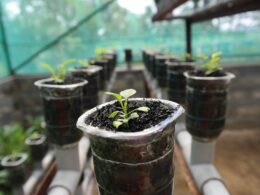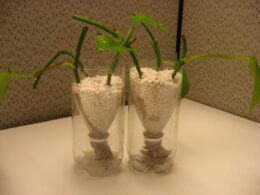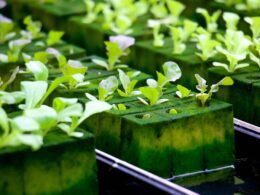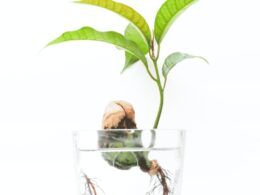Are you tired of putting in the effort to grow your own tomatoes only to be disappointed by their lackluster taste? It can be frustrating to put time and energy into something only to have it fall short of your expectations. But fear not, there are several factors that could be contributing to your less-than-stellar tomato taste, and with a few adjustments, you can turn your disappointing harvest into a delicious one.
One of the most important factors to consider is the ripeness of your tomatoes. Harvesting your tomatoes at the right time can make all the difference in their flavor.
Additionally, the variety of tomato you choose can also impact its taste. But it’s not just about the type of tomato you grow, the soil quality, nutrient balance, watering, sunlight exposure, and even storage can all play a role in the final taste of your tomatoes.
So let’s dive into each of these factors and explore how to get the most flavorful tomatoes possible.
Importance of Tomato Ripeness
Feasting on juicy, succulent tomatoes at the peak of ripeness is a mouthwatering experience that you simply can’t miss out on. The difference between a bland and a flavorful tomato lies in its ripeness.
As tomatoes ripen, they develop a complex balance of acids and sugars, which give them their signature taste. If you pick a tomato too early, it will taste sour and lack the depth of flavor that you desire.
Tomato ripeness is crucial when it comes to flavor development. The longer a tomato stays on the vine, the more flavorful it becomes. As a tomato matures, it converts starches to sugar, which results in a sweeter and more robust flavor. Moreover, a fully ripe tomato has a perfect balance of acidity and sweetness that creates a symphony of flavors in your mouth. Therefore, it’s essential to pick your tomatoes at the right time to ensure that you get the most flavor out of them.
Picking time is another critical factor that affects the taste of your homegrown tomatoes. To get the best flavor, you must pick your tomatoes when they are fully ripe. If you pick them too early, they won’t have enough time to develop their full flavor potential. Conversely, if you wait too long, they may become overripe, and their texture may become mealy.
Therefore, you should keep a close eye on your tomatoes and pick them as soon as they reach their peak ripeness.
Tomatoes Variety and Taste
The variety of tomatoes you choose can greatly impact their flavor. Tomato flavor profiles can range from sweet to tangy, with some varieties having a more acidic taste. Heirloom tomatoes are known for their unique flavor profiles and are often favored by tomato enthusiasts. Alternatively, hybrid varieties are bred to have specific characteristics, such as disease resistance or longer shelf life, and may sacrifice some flavor in the process.
When selecting tomato varieties, it’s important to consider what flavor profile you prefer. If you enjoy a sweeter tomato, try growing cherry or grape tomatoes. For a more tangy flavor, consider growing Roma or San Marzano tomatoes. Heirloom varieties, such as Brandywine or Cherokee Purple, offer a wide range of unique flavor profiles that can add variety to your dishes.
While heirloom tomatoes are known for their flavor, they may not be the best choice for beginner gardeners. They can be more finicky to grow and may have a shorter shelf life than hybrid varieties. Ultimately, the choice of tomato variety comes down to personal preference and growing conditions.
Experiment with different varieties to find the ones that produce the best flavor in your garden.
Soil Quality and Nutrient Balance
If you want your homegrown tomatoes to taste great, you need to pay attention to your soil. The pH level of your soil can have a significant impact on the taste of your tomatoes.
Additionally, tomatoes require proper nutrients to grow, so it’s important to ensure your soil has the right balance.
Soil pH and its impact on tomato taste
You’ll notice a significant difference in the flavor of your tomatoes based on the pH level of your soil. Soil acidity has a profound impact on the taste perception of tomatoes.
If the pH level of your soil is too low or too high, it can affect the availability of nutrients to the plant, which in turn affects the flavor of the fruit.
Tomatoes thrive in soil with a pH level between 6.0 and 6.8. If your soil is too acidic (below 6.0), it can lead to a sour taste in your tomatoes. On the other hand, if your soil is too alkaline (above 6.8), your tomatoes may have a bland taste.
It’s important to test your soil pH and adjust it to the ideal range for growing tomatoes. Adding lime to acidic soil or sulfur to alkaline soil can help balance the pH level and improve the taste of your homegrown tomatoes.
Importance of proper nutrients for tomato growth
Proper nutrients are key to growing delicious and healthy tomatoes, so it’s important to ensure your plants are getting the right amount of nutrients to thrive. Nutrient deficiencies can lead to poor growth, weak stems, and a lack of fruit production.
In order to avoid these issues, it’s important to choose the right fertilization methods for your plants and to monitor their nutrient levels regularly. There are many different fertilization methods to choose from, including synthetic fertilizers, organic fertilizers, and even homemade compost.
It’s important to choose the right method for your plants based on their specific needs and the nutrients they require. Regular monitoring of your plants’ nutrient levels can help you identify any deficiencies and adjust your fertilizer application accordingly, ensuring that your tomatoes are getting the right amount of nutrients at all times.
By providing your plants with the proper nutrients, you can help them grow strong and healthy, producing delicious and flavorful tomatoes that you can enjoy all season long.
Watering and Sunlight
Make sure to water your tomato plants regularly and place them in a spot where they can soak up plenty of sunshine to produce flavorful fruit. Proper watering frequency is important in preventing tomato leaf wilt, which can negatively affect the taste of your tomatoes. Additionally, proper sun exposure can help your tomatoes develop the sugars and acids needed for a rich and delicious flavor.
To ensure your tomato plants are receiving adequate water and sunlight, follow these tips:
- Water deeply and infrequently, rather than shallowly and frequently. This encourages root growth and helps prevent tomato leaf wilt.
- Water in the morning to allow the leaves to dry before nightfall, which can also help prevent tomato leaf wilt.
- Choose a location with at least 6 hours of direct sunlight per day for your tomato plants.
- Consider using a trellis or cage to support your tomato plants and keep them off the ground, where they may not receive enough sunlight or may be more susceptible to pests and diseases.
By taking these steps to properly water and provide adequate sunlight to your tomato plants, you can help ensure they produce flavorful and delicious fruit. Remember to also consider the importance of providing proper nutrients, as discussed in the previous subtopic, to further enhance the taste of your homegrown tomatoes.
Harvesting and Storage
Ready to enjoy the fruits of your labor? Let’s talk about how to harvest and store your delicious tomatoes! Proper handling is essential when it comes to harvesting your tomatoes.
Be sure to pick them when they’re fully ripe, with a bright red color and a slightly soft texture. Gently twist the tomatoes off the vine and avoid pulling them, as this can damage the plant and affect future growth.
Post-harvesting techniques play a crucial role in the taste and quality of your tomatoes. Once harvested, wash the tomatoes with cool water and dry them thoroughly. Store them at room temperature, away from direct sunlight, and avoid stacking them on top of each other.
If you want to extend their shelf life, you can also store them in the refrigerator, but be aware that this can sometimes affect the flavor.
Incorporate these simple steps into your harvesting and storage routine, and you’ll be well on your way to enjoying the best-tasting homegrown tomatoes. Remember, proper handling and post-harvesting techniques are key to the quality and flavor of your produce. So go ahead and enjoy the fruits of your labor!
Frequently Asked Questions
How do I know if my tomatoes are ripe?
When it comes to harvesting your own tomatoes, there are a few techniques you can use to ensure they’re ripe and ready to eat.
One color indicator to look for is a deep, rich red color. If your tomato still has some green on it, it’s not quite ready yet.
Another technique is to gently squeeze the tomato. It should have a slight give to it without feeling too soft or mushy.
By using these harvesting techniques, you can ensure that your tomatoes are at their peak flavor and nutrition.
Can different tomato varieties affect the taste?
If you want to improve the flavor in your home-grown tomatoes, choosing the best tasting tomato varieties to grow is key. Some of the most popular and flavorful varieties include the Brandywine, Cherokee Purple, and Sun Gold.
In addition to choosing the right variety, there are several things you can do to enhance the taste of your tomatoes. First, make sure to give them plenty of sunlight and water. Additionally, adding organic matter to your soil can improve the nutrient content, which can lead to better tasting tomatoes. Finally, allowing your tomatoes to fully ripen on the vine before picking them can also enhance their flavor.
With these tips in mind, you can enjoy delicious and flavorful tomatoes straight from your own garden.
Why do my tomatoes have a bitter taste?
Feeling disappointed with your tomato harvest? Don’t worry, tomato bitterness is a common issue that can be resolved.
The bitter taste is often caused by environmental factors such as irregular watering or too much sun exposure. To improve the flavor of your tomatoes, make sure to provide consistent watering and consider providing shade during the hottest parts of the day.
Additionally, adding organic matter to the soil can help improve the overall taste of your tomatoes. With a little bit of attention and care, your homegrown tomatoes can be a delicious addition to any meal.
How often should I water my tomato plants?
To ensure that your tomato plants are healthy and produce tasty fruit, it’s important to water them properly. The best watering technique is to water deeply and infrequently, allowing the soil to dry out slightly between waterings. This encourages the roots to grow deeper, resulting in stronger plants that are better able to withstand drought and disease.
Avoid common watering mistakes such as overwatering, which can lead to root rot and other issues, or watering during the hottest part of the day, which can cause water to evaporate before it has a chance to reach the roots. With proper watering techniques, your tomato plants will thrive and produce delicious fruit for you to enjoy.
How long can I store my harvested tomatoes before they go bad?
When it comes to storing and preserving tomatoes, there are a few things you need to keep in mind to ensure they don’t go bad too quickly. First, make sure you store them in a cool, dry place, ideally between 55-70°F. Avoid storing them in direct sunlight or in the refrigerator, as this can cause them to lose flavor and texture.
If you’re looking to preserve your tomatoes for a longer period of time, consider canning or freezing them. Canning involves heating the tomatoes and sealing them in jars, while freezing involves blanching the tomatoes and then freezing them in airtight containers. Either way, make sure to follow proper food safety guidelines to ensure your tomatoes stay fresh and safe to eat.
Conclusion
So, why do your home grown tomatoes taste bad? Well, there are a few factors to consider.
First, make sure you’re allowing your tomatoes to ripen fully. This is crucial for the best flavor.
Additionally, the variety of tomato you choose and the soil quality can also affect taste. It’s important to pay attention to the nutrient balance in your soil and ensure your plants are getting enough water and sunlight.
Lastly, how you harvest and store your tomatoes can also impact their taste.
By taking these factors into consideration, you can improve the flavor of your home grown tomatoes and enjoy the delicious fruits of your labor.









